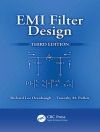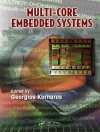Praised for its visual appeal, conversational style and clear explanation of complex ideas with minimal mathematics,
Electricity from Sunlight has been thoroughly revised and updated to reflect advances in the global PV market, economics and installed capacity.
Key features of the 2nd edition include:
Electricity from Sunlight: Photovoltaics Systems Integration and Sustainability, Second Edition is an essential primer for new entrants to the PV industry, needing a basic appreciation of complete PV systems, and to students on undergraduate and graduate courses on renewable energy and photovoltaics. It also offers a unique treatise of the sustainability of emerging transformative technologies, which makes it useful to both system analysts and energy policy strategists.
Co-author, Vasilis Fthenakis, is Recipient of the 2018 William R. Cherry Award
The Cherry Award recognizes an individual engineer or scientist who has made a significant contribution to the advancement of the science and technology of photovoltaic energy conversion, with dissemination by substantial publications and presentations. Fthenakis was honored for his pioneering research at the interface of energy and the environment that catalyzed photovoltaic technology advancement and deployment world-wide.
表中的内容
About the Authors xi
Foreword xiii
Preface to the First Edition xv
Preface to the Second Edition xvii
Acknowledgment to the First Edition xix
Acknowledgment to the Second Edition xxiii
About the Companion Website xxv
1 Introduction 1
1.1 Energy and Sustainable Development 1
1.2 The Sun, Earth, and Renewable Energy 2
1.3 The Solar Resource 6
1.4 The Magic of Photovoltaics 11
1.5 A Piece of History 13
1.6 Coming Up to Date 17
Appendix 1.A Energy Units and Conversions 22
CO2 Emissions per Fuel Type 22
CO2 Emissions in Transportation 23
Self‐Assessment Questions 23
Problems 24
Answers to Questions 25
References 25
2 Solar Cells 27
2.1 Setting the Scene 27
2.2 Crystalline Silicon 30
2.2.1 The Ideal Crystal 30
2.2.2 The p–n Junction 32
2.2.3 Monocrystalline Silicon 35
2.2.3.1 Photons in Action 35
2.2.3.2 Generating Power 37
2.2.3.3 Sunlight, Silicon, and Quantum Mechanics 41
2.2.3.4 Refining the Design 45
2.2.4 Multicrystalline Silicon 51
2.3 Second‐Generation Photovoltaics 52
2.3.1 Amorphous and Thin‐Film Silicon 53
2.3.2 Copper Indium Gallium Diselenide (CIGS) 57
2.3.3 Cadmium Telluride (Cd Te) 60
2.4 Cell Efficiency and Module Cost 61
2.5 Third‐Generation Solar Cells 64
2.5.1 Gallium Arsenide (Ga As) Multi‐Junctions 65
2.5.2 Dye‐Sensitized Cells 67
2.5.3 Organic Solar Cells 69
2.5.4 Perovskites 72
Self‐Assessment Questions 73
Problems 75
Answers to Questions 76
References 77
3 PV Modules and Arrays 79
3.1 Introduction 79
3.2 Electrical Performance 82
3.2.1 Connecting Cells and Modules 82
3.2.2 Module Parameters 85
3.3 Capturing Sunlight 88
3.3.1 Aligning the Array 92
3.3.2 Sunshine and Shadow 98
3.4 One‐Axis Tracking 101
3.5 Concentration and Two‐Axis Tracking 102
Appendix 3.A 107
3.A.1 Converting Global Horizontal Irradiation Data to Tilted and Sun‐Tracking Surfaces 107
3.A.1.1 Solar Data Collection 108
3.A.1.2 Calculation of Extraterrestrial Radiation 108
3.A.1.3 Determining the Diffuse and the Direct Components of the Global Horizontal Irradiation 110
3.A.1.4 Using a Model to Calculate the Energy Incident on the Inclined Surface per Time Increment 111
3.A.1.5 Comparisons of Different Configurations 114
Self‐Assessment Questions 114
Problems 115
Answers to Questions 119
References 120
4 Grid‐Connected PV Systems 121
4.1 Introduction 121
4.2 From DC to AC 122
4.3 Completing the System 128
4.4 Building‐Integrated Photovoltaics (BIPV) 130
4.4.1 Engineering and Architecture 130
4.4.2 PV Outside, PV Inside 132
4.5 The Growth of Global PV Markets 140
4.6 Current Status of the PV Industry 144
4.7 Large PV Power Plants 145
4.7.1 Commercial and Industrial Installations 147
4.7.2 Utility‐Scale PV 147
4.8 PV Grid Connection and Integration 155
4.8.1 The Electricity Grid 155
4.8.2 Grid‐Friendly PV Power Plants 157
4.9 Electricity Markets and Types of Power Generators 160
4.10 The Variability Challenge and Solutions 164
4.10.1 Long‐Distance Transmission Lines 167
4.10.2 Grid Flexibility 168
4.11 Energy Storage 170
4.11.1 Power‐Quality Storage Technologies 171
4.11.1.1 Superconducting Magnetic Energy Storage 171
4.11.1.2 Electric Double‐Layer Capacitors 172
4.11.1.3 Flywheels 173
4.11.2 Bridging Power 173
4.11.2.1 Lead‐Acid Batteries 173
4.11.2.2 Lithium‐Ion Batteries 175
4.11.2.3 Flow Batteries 176
4.11.3. Energy Management Storage Technologies 178
4.11.3.1 Pumped Hydro Energy Storage 178
4.11.3.2 Compressed Air Energy Storage 179
Self‐Assessment Questions 182
Problems 183
Answers to Questions 184
References 185
5 Stand‐Alone PV Systems 187
5.1 Remote and Independent 187
5.2 System Components 189
5.2.1 Batteries 189
5.2.2 Charge Controllers 193
5.2.3 Inverters 198
5.3 Hybrid Systems 202
5.4 System Sizing 204
5.4.1 Assessing the Problem 204
5.4.2 PV Arrays and Battery Banks 207
5.5 Applications 211
5.5.1 PV in Space 212
5.5.2 Island Electricity 215
5.5.3 PV Water Pumping 219
5.5.4 Solar‐Enabled Water Desalination 223
5.5.5 Solar‐Powered Boats 225
5.5.6 Far and Wide 230
Self‐Assessment Questions 233
Problems 234
Answers to Questions 235
References 235
6 Photovoltaic Manufacturing 237
6.1 Production of Crystalline Si Solar Cells 237
6.1.1 Production of Metallurgical Silicon 237
6.1.2 Production of Polysilicon (Silicon Purification) 238
6.1.3 Production of Crystalline Silicon 243
6.1.3.1 Single‐Crystal Silicon 244
6.1.3.2 Multicrystalline Silicon 245
6.1.4 Ingot Wafering 246
6.1.5 Doping/Forming the p–n Junction 248
6.1.6 Cleaning Etch 249
6.1.7 Surface Texturing to Reduce Reflection 249
6.1.8 Antireflection Coatings and Fire‐Through Contacts 249
6.1.9 Edge Isolation 249
6.1.10 Rear Contact 249
6.1.11 Encapsulation 249
6.2 Opportunities and Challenges in Si PV Manufacturing 250
6.3 Thin‐Film PV Manufacturing 253
6.3.1 CIGS Thin‐Film Manufacturing 254
6.3.1.1 Co‐evaporation 257
6.3.1.2 Metal Selenization/Sulfurization 257
6.3.1.3 Non‐Vacuum Particle or Solution Processing 258
6.3.2 Cd Te PV Manufacturing 258
Self‐Assessment Questions 261
Problems 262
Answers to Questions 263
References 263
7 PV Growth and Sustainability 265
7.1 Affordability 266
7.1.1 Costs and Markets 266
7.1.2 Financial Incentives 272
7.1.2.1 Capital Grants 272
7.1.2.2 Special Tariffs 274
7.1.2.3 Financing Options 275
7.1.2.4 Renewable Portfolio Standards 276
7.1.2.5 Carbon Fees/Programs 276
7.1.3 Rural Electrification 279
7.1.4 External Costs and Benefits 283
7.1.5 Policy Recommendations for Further Growing Solar Energy 284
7.1.5.1 R&D Funding 284
7.1.5.2 Solar Financing Flexibility 284
7.2 Resource Availability 285
7.2.1 Raw Materials 285
7.2.2 Land Use 290
7.2.3 Water Use 293
7.3 Life‐Cycle Environmental Impacts 295
7.3.1 Life‐Cycle Analysis 295
7.3.2 Environmental Health and Safety (EHS) in PV Manufacturing 306
7.3.3 Recycling Programs 311
7.4 The Growth of PV is Sustainable and Greatly Needed 315
Self‐Assessment Questions 316
Problems 316
Answers to Questions 317
References 318
Index 321
关于作者
VASILIS M. FTHENAKIS is the founder and director of the Center for Life Cycle Analysis (CLCA), Department of Earth and Environmental Engineering, Columbia University, New York, USA. He is also a senior scientist emeritus at Brookhaven National Laboratory (BNL) where he conducted research for 36 years and directed the National Photovoltaics (PV) Environmental Research Center and several international networks. Dr. Fthenakis is the coauthor and editor of four books and about 400 scientific publications on topics at the interface of energy life cycles and the environment. Currently, he is leading research on solar desalination, energy systems modeling, life-cycle analysis, chemical process safety, and PV recycling. Vasilis Fthenakis is the recipient of the William R. Cherry Award 2018. The Cherry Award recognizes an individual engineer or scientist who has made a significant contribution to the advancement of the science and technology of photovoltaic energy conversion, with dissemination by substantial publications and presentations.
PAUL A. LYNN obtained his B.Sc.(Eng) and Ph.D. degrees from Imperial College London, UK. After several years in the electrical/electronics industry, he lectured at Imperial College and the University of Bristol. As a retired academic, Dr. Lynn’s long-term interest in renewable energy has led to a trilogy of Wiley books (including this one), and three solar-powered boats. He is the author of ten other books and numerous technical papers and articles.












